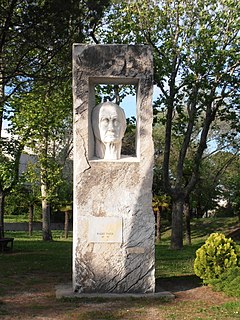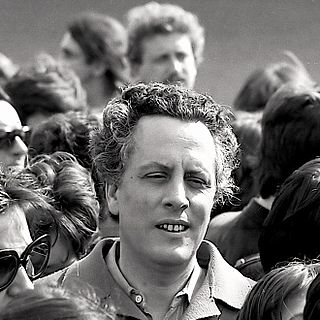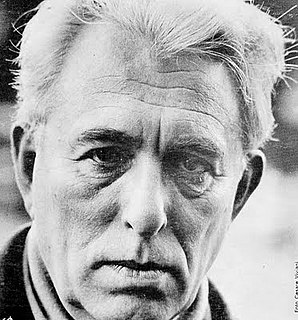
Umberto Saba was an Italian poet and novelist, born Umberto Poli in the cosmopolitan Mediterranean port of Trieste when it was the fourth largest city of the Austro-Hungarian Empire. Poli assumed the pen name "Saba" in 1910, and his name was officially changed to Umberto Saba in 1928. From 1919 he was the proprietor of an antiquarian bookshop in Trieste. He suffered from depression for all of his adult life.

Eugenio Montale was an Italian poet, prose writer, editor and translator, and recipient of the 1975 Nobel Prize in Literature.

Pasquale Villari was an Italian historian and politician.
Arnoldo Mondadori Editore is the biggest publishing company in Italy.

The Sixth Battle of the Isonzo also known as the Battle of Gorizia was the most successful Italian offensive along the Soča (Isonzo) River during World War I.

Biagio Marin (1891–1985) was a Venetian poet, best known from his poems in the Venetian language, which had no literary tradition until then. In his writings he never obeyed rhetoric or poetics. He only employed a few hundred words for his poems.

Federico De Roberto was an Italian writer, who became well known for his historical novel I Viceré (1894), translated as The Viceroys.

Julius Kugy was a mountaineer, writer, botanist, humanist, lawyer and officer of Slovenian descent. He wrote mostly in German. He is renowned for his travelogues from opening up the Julian Alps, in which he reflected on the relationship between man, nature, and culture. He opposed competing nationalist ideologies in the Alpe-Adria region, insisting on the need of peaceful co-existence among Slovene, Italian and German peoples.

Cesare Segre was an Italian philologist, semiotician and literary critic of Jewish descent, and the Director of the Texts and Textual Traditions Research Centre of the Institute for Advanced Studies of Pavia (IUSS).

Antonio Porta was an author and poet and one of the founders of the Italian literary movement Gruppo 63.

Franco Fortini was the pseudonym of Franco Lattes, an Italian poet, writer, translator, essayist, literary critic and Marxist intellectual.

Gianfranco Contini was an Italian academic and Philologist

Bertrando Spaventa was a leading Italian philosopher of the 19th century whose ideas had an important influence on the changes that took place during the unification of Italy and on philosophical thought in the 20th century.

Mario Gromo was a journalist, writer and Italian film critic.

Guido Seborga, pseudonym of Guido Hess, was an Italian journalist, poet, painter and writer.
Emilio Cecchi was an Italian literary critic, art critic and screenwriter. One English language source describes him as "an 'official' - although radically anti-academic - intellectual".

Virgil Schönbeck, known by his pen name Virgilio Giotti, was an Italian poet writing both in Italian and in the Triestine dialect. Giotti's poetry "which is not so much linked to the vernacular tradition as to contemporary poetry in the Italian language, from Pascoli and the Crepuscolari to hermeticism, uses the dialect to give more intimate vibration to its lyrical motifs, now inspired by a loving or familiar, serene or painful intimacy, now by nature, by the landscape, by the minute life of his city; in forms that from the musicality of the canzonetta approach more and more, and with ever greater grace, an epigrammatic essentiality."
Alberto Spaini was an Italian journalist-commentator and author. He was also a scholar of German literature, producing through his career many translations into Italian of traditional and contemporary German classics.
Steno Tedeschi (1881–1911) was an Italian intellectual and academic. His works were associated with the ideas of the Graz School and he is noted for contributing to its object theory and Stephan Witasek's aesthetics. Tedeschi was Italo Svevo's cousin.
Carlo Stuparich was an Italian writer, patriot and war hero. His one substantive work was published only posthumously, on the intitiative of his elder brother, Giovanni “Giani” Stuparich (1891-1961), another notable author. Admirers believe that, had he lived for longer, Carlo would have been remembered as the more accomplished and more original writer of the two. On 30 May 1916 Carlo Stuparich and the platoon he led, having become cut-off near Fort Corbin in the aftermath of a general retreat order some days earlier from higher up the chain of command, found themselves surrounded, outnumbered and overwhelmingly outgunned by the Austrian army under the command of Field Marshal von Hötzendorf. After a failed counter-attack in which his platoon had been wiped out, Carlo Stuparich committed suicide in order to avoid capture by the enemy.















